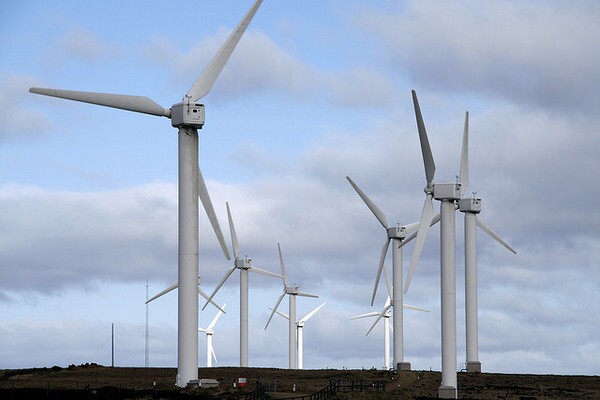California Finally Beats Texas for Wind Installations in 2011

More of these were installed in California last year than in any other state. | Photo: K Ali/Flickr/Creative Commons License
As political battle lines are drawn up over the looming expiration of the federal Wind Production Tax Credit, which many observers credit for a rapid increase in wind turbine installations, the Department of Energy this week released its Wind Technologies Market Report for 2011 -- and it indicates that the tax credit really has kicked up wind energy production. Written by researchers at the Lawrence Berkeley National Laboratory, the report finds that new wind power installations accounted for a third of new power generating capacity installed in 2011 -- and that California led the pack in new wind power capacity for the year.
According to the report, California installed 921 megawatts of new wind power generating capacity in 2011, displacing Texas from its six-year reign as wind power installation champion. Nationwide, 6.8 gigawatts of new wind generation capacity was installed in 2011.
Unsurprisingly to anyone who lives near new wind turbines, the report also found that the average size of turbines increased in 2011. The median wind turbine in the U.S. is now a 1.97 megawatt turbine atop a 265-foot pole, with blades 145 feet long -- and remember that "median" means around half of turbines will be that size or larger.
But the report cautions that not all is rosy in the outlook for wind development companies in 2013 and beyond. The report cites the possible expiration of the Production Tax Credit in December, under which qualifying turbine owners receive a 2.1-cent tax credit for every kilowatt-hour of power they produce, as undermining potential growth in the industry. Record-low prices for natural gas, wind's main competitor as a power source, and declining demand for power driven by a slow economy are also potential speedbumps for the wind industry, according to the report.
ReWire is dedicated to covering renewable energy in California. Keep in touch by liking us on Facebook, and help shape our editorial direction by taking this quick survey here.